
Mount Gilead, sometimes abbreviated as Mt. Gilead, is a town in Montgomery County, in the Piedmont region of North Carolina, United States. The population was 1,181 at the 2010 census.
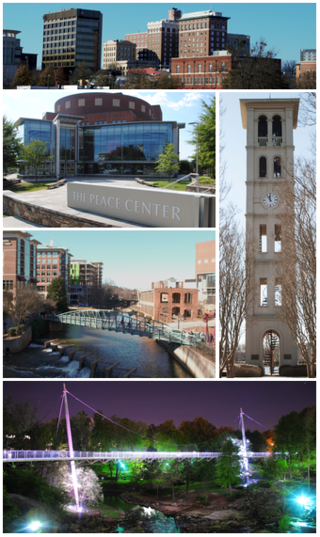
Greenville is a city in and the county seat of Greenville County, South Carolina, United States. With a population of 70,720 at the 2020 census, it is the 6th-most populous city in the state. Greenville is located approximately halfway between Atlanta, Georgia, and Charlotte, North Carolina, along Interstate 85. Its metropolitan area also includes Interstates 185 and 385. Greenville is the anchor city of the Upstate, a combined statistical area with an estimated population of 1,590,636 in 2023. Greenville was the fourth fastest-growing city in the United States between 2015 and 2016, according to the U.S. Census Bureau.
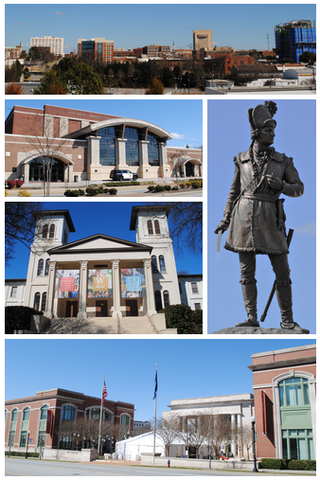
Spartanburg is a city in and the seat of Spartanburg County, South Carolina, United States. The city had a population of 38,732 as of the 2020 census, making it the 11th-most populous city in the state. For a time, the Office of Management and Budget (OMB) grouped Spartanburg and Union counties together as the Spartanburg, SC Metropolitan Statistical Area, but the OMB now defines the Spartanburg, SC MSA as only Spartanburg County.

High Point is a city in the Piedmont Triad region of the U.S. state of North Carolina. Most of the city is in Guilford County, with parts extending into Randolph, Davidson, and Forsyth counties. High Point is North Carolina's only city that extends into four counties. As of the 2020 census the city had a total population of 114,059. High Point is the ninth-most populous in North Carolina, the third-largest municipality in the Piedmont Triad, and the 259th-most populous city in the U.S.

Piedmont is a census-designated place (CDP) along the Saluda River in Anderson and Greenville counties in the U.S. state of South Carolina. The population was 5,411 at the 2020 census.

Greer is a city in Greenville and Spartanburg counties in the U.S. state of South Carolina. The population was 35,308 as of the 2020 census, making it the 14th-most populous city in South Carolina. Greer is included in the Greenville-Anderson-Greer, SC Metropolitan Statistical Area, which is part of the Greenville-Spartanburg-Anderson, SC Combined Statistical Area in Upstate South Carolina.
Converse University is a private university in Spartanburg, South Carolina. It was established in 1889 by a group of Spartanburg residents and named after textile pioneer Dexter Edgar Converse. It was originally a women's college but now admits men.
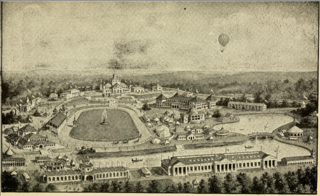
The Cotton States and International Exposition was a world's fair held in Atlanta, Georgia, United States in 1895. The exposition was designed "to foster trade between southern states and South American nations as well as to show the products and facilities of the region to the rest of the nation and Europe."

The Southern Exposition was a five-year series of world's fairs held in the city of Louisville, Kentucky, from 1883 to 1887 in what is now Louisville's Old Louisville neighborhood. The exposition, held for 100 days each year on 45 acres (180,000 m2) immediately south of Central Park, which is now the St. James-Belgravia Historic District, was essentially an industrial and mercantile show. At the time, the exposition was larger than any previous American exhibition with the exception of the Centennial Exposition held in Philadelphia in 1876. U.S. President Chester A. Arthur opened the first annual exposition on August 1, 1883.

Piedmont Number One is a former textile plant and former National Historic Landmark in Piedmont, Greenville County, South Carolina. It burned in 1983.

The Coleman Manufacturing Company (1897–1904) had the first cotton mill in the United States owned and operated by African Americans. Organized in 1897 by Warren Clay Coleman and others, and operating under original leadership until 1904, it was located in the Piedmont area about two miles from the county seat of Concord, North Carolina in Cabarrus County. Textile manufacturing had been established here before the American Civil War, but the mills hired only white industrial workers. The Coleman property later became part of Franklin Cotton Mills and a Fieldcrest Cannon plant.

Mills Mill was a textile mill in Greenville, South Carolina (1897-1978) that in the 21st century was converted into loft-style condominia. The building is listed on the National Register of Historic Places.

Monaghan Mill, now the Lofts of Greenville, is a former textile mill (1900–2001) in Greenville, South Carolina, that in the early 21st century was converted into loft apartments. The building is listed on the National Register of Historic Places.

Isaqueena, also known as the Gassaway Mansion, is a historic house in Greenville, South Carolina, and the largest private residence in the Upstate. In 1982 it was listed in the National Register of Historic Places.

Woodside Cotton Mill Village Historic District is a national historic district located in Greenville County, South Carolina. The district encompasses 278 contributing buildings and 2 contributing sites in an early 20th century urban South Carolina textile mill village. Centered on a mill founded by John T. Woodside in 1902, the district is located just west of the city limits of Greenville and is largely intact despite modernizations made by a succession of mill and home owners. The mill itself is a rectangular, brick, four-story building designed by J.E. Sirrine and built between 1902 and 1912. Eventually the mill became the largest cotton mill under one roof in the United States and one of the largest in the world.

Southern Bleachery and Print Works is a historic factory building in Taylors, Greenville County, South Carolina. Founded by former Furman University English professor Bennette Geer, and built by the J. E. Sirrine Company of Greenville, the mill operated between 1924 and 1965, with the last historic structure being built in 1952. The property consists of 15 contributing resources, including a main building, warehouses, a smokestack, a detached boiler room with smokestack, a filtration plant, and two ponds. The bleachery acquired unfinished goods produced by other textile mills and converted them by bleaching, dyeing, and finishing into material used to manufacture clothing and other items. A small mill village, including Baptist and Methodist churches, was established nearby, and many mill houses continued to exist into the 21st century.

Brandon Mill, now the West Village Lofts, is a historic textile mill complex, situated just west of the city of Greenville, Greenville County, South Carolina. The mill was built during the early decades of the 20th century and is one example of the mills in the Greenville "Textile Crescent" that became central to the economic development of the South Carolina upstate during this period. The complex was listed on the National Register of Historic Places in 2014, and the main mill has been converted into loft apartments.
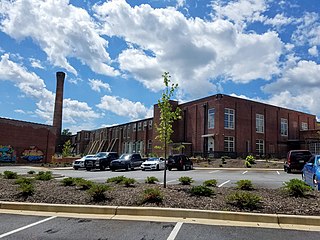
Arcadia Mills No. 1, now the Arcadia Station Lofts, is a historic mill building at 1875 Hayne Street in Spartanburg, South Carolina. The mill was built in 1903 and enlarged in 1909, to designs by Greenville J.E. Sirrine. It is a well-preserved example of textile mill engineering from the early years of South Carolina's boom period in that industry.
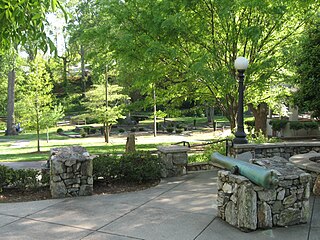
McPherson Park is a historic city park, the oldest in Greenville, South Carolina. As part of the East Park Historic District, the park was added to the National Register of Historic Places on October 4, 2005.
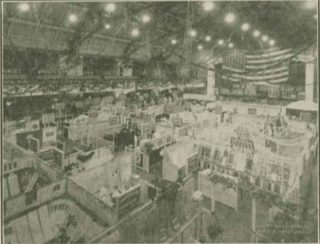
The Southern Textile Exposition (1915-2004) was an intermittent trade fair for textile manufacturers held in Greenville, South Carolina.



















